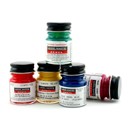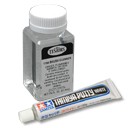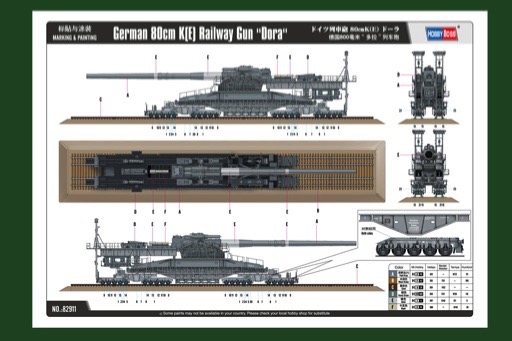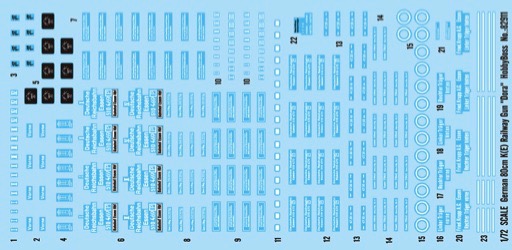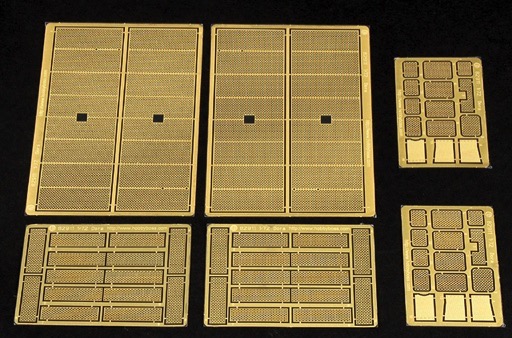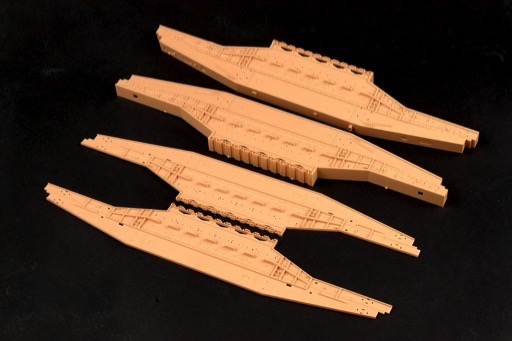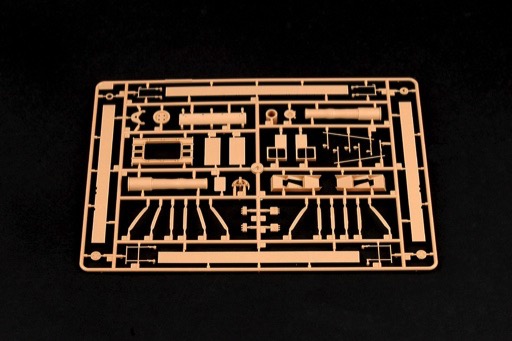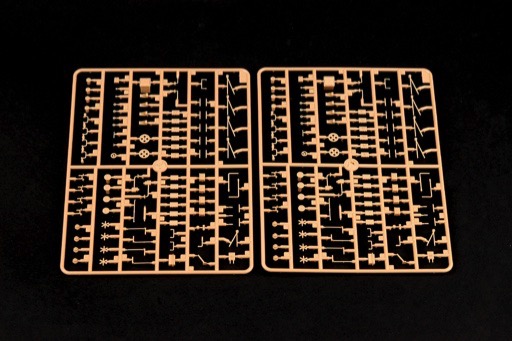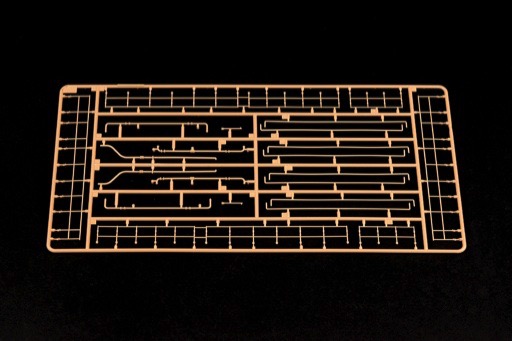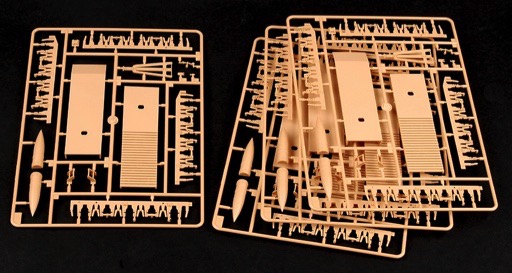

German 80cm K(E) Railway Gun Dora
Unassembled plastic model kit with photo-etch parts.
In Stock (Ships in 1-3 business days)List price: $310.00
You pay: $219.99
(All prices in U.S. Dollars)

Manufacturer: HobbyBoss Models
Stock Number: HBB 82911
Scale: 1/72
View all products of type "80cm Dora"
You pay: $219.99
(All prices in U.S. Dollars)


Manufacturer: HobbyBoss Models
Stock Number: HBB 82911
Scale: 1/72
View all products of type "80cm Dora"
This model kit requires assembly. Cement, paint and other construction materials not included unless specifically stated in the description.
Krupp's 2nd 1350 tonne WWII era railway heavy siege gun. Kit consists of 1767 parts and features accurately molded massive dual-hull superstructure, 4 bogie span bolsters (with asymmetric left and right assemblies), control room, and complex gun carriage - all supporting an exceptional weapon with rifled barrel. Also includes injection-molded railings and ladders, shells, charges, 2 ammunition elevators, display base (side-by-side railway tracks with bed), plus photo-etch parts (6 frets including walkways and load bearing platform elements).
Assembled gun is adjustable in elevation (includes breech ballast for balance) and completed length is approximately 43.75". Decals and painting guide.
Schwerer Gustav (English: Heavy Gustaf, or Great Gustaf) and Dora were the names of two massive World War 2 German 80 cm K (E) railway siege guns. They were developed in the late 1934 by Krupp for the express purpose of destroying heavy fortifications, specifically those in the French Maginot Line. They weighed nearly 1,350 tonnes, and could fire shells weighing seven tonnes to a range of 37 kilometers. Designed in preparation for World War II, and intended for use against the deep forts of the Maginot Line, they were not ready for action when the Wehrmacht outflanked the line during the Battle of France. Gustav was used in the Soviet Union at the siege of Sevastopol during Operation Barbarossa. They were moved to Leningrad, and may have been intended for Warsaw. Gustav was captured by US troops and cut up, whilst Dora was destroyed near the end of the war to avoid capture by the Red Army.
Assembled gun is adjustable in elevation (includes breech ballast for balance) and completed length is approximately 43.75". Decals and painting guide.
Schwerer Gustav (English: Heavy Gustaf, or Great Gustaf) and Dora were the names of two massive World War 2 German 80 cm K (E) railway siege guns. They were developed in the late 1934 by Krupp for the express purpose of destroying heavy fortifications, specifically those in the French Maginot Line. They weighed nearly 1,350 tonnes, and could fire shells weighing seven tonnes to a range of 37 kilometers. Designed in preparation for World War II, and intended for use against the deep forts of the Maginot Line, they were not ready for action when the Wehrmacht outflanked the line during the Battle of France. Gustav was used in the Soviet Union at the siege of Sevastopol during Operation Barbarossa. They were moved to Leningrad, and may have been intended for Warsaw. Gustav was captured by US troops and cut up, whilst Dora was destroyed near the end of the war to avoid capture by the Red Army.

Copyright © 2005-2024 Scale Hobbyist, all rights reserved









